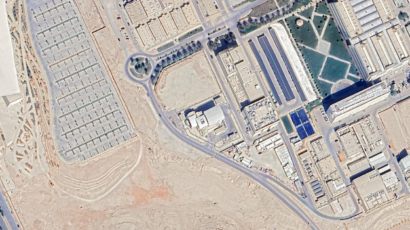A cap-and-trade system would promote broad international participation
By Gernot Wagner, Nathaniel Keohane, November 7, 2008
We gladly take on David Weisbach and Jane Milne’s challenge to focus on the international dimension. David argues that a tax dominates on this count. We strongly disagree. A cap-and-trade system allows for the creation of a global carbon market. Such a market would provide the mechanisms and flexibility necessary to achieve the environmental goals at the lowest cost and the incentives for other countries to join. A tax does neither, while requiring much more harmonization across countries.
Since environmental integrity is the starting point in our debate, let’s also agree that the United States or European Union (EU) won’t be able to go it alone. Therefore, any policy solution needs to include China, India, and a cadre of other significant developing countries. Developing countries wouldn’t be expected to decrease emissions as steeply as the United States and the ramp-up can be slower, but they need to be part of the solution nevertheless.
We also know that many other countries provide cheaper abatement opportunities than can be found in the United States or EU. Similarly, it will be necessary to provide financial incentives for developing countries to join because of ability to pay and the principle of “common but differentiated responsibilities” enshrined in UN documents (and agreed to by Washington) that says that industrialized countries ought to shoulder much of the burden.
How would such a system of international participation work under a carbon tax? The U.S. government collects taxes from businesses domestically. The Treasury then turns around and sends some of the collected money to its counterparts in China, India, or other developing countries, which, in turn, spend it on local abatement opportunities. That process, as David says, may be “infeasible.” More directly put, it’s simply not going to happen, and many economists and policy makers agree–former Treasury Secretary Lawrence Summers among them.
How would this process work in a global carbon market? As a first pass–and admittedly, we’re offering a rosy picture here–it will be like any other market transaction. Instead of the U.S. Treasury, it would be a private transaction between U.S. and foreign companies. It’s in the self-interest of the U.S. company to seek out least-cost compliance options. If that option can be found halfway around the world, so be it. Money will follow the market opportunity.
Concrete numbers are still hard to come by, but these financial flows would be in the low tens of billions of dollars. That alone shows that the market will be the only way to go. These sums are significantly more than current official development assistance or other nonmarket flows. Yet, they’re small compared to overall market transactions. In 2007, industrialized countries sent, on net, in the order of $450 billion in foreign direct investment to developing countries. (The gross figure is closer to $1.7 trillion.)
For this reason, a cap-and-trade system could promote broad international participation. Developing countries would almost surely be net sellers in a global carbon market–both because they have ample low-cost abatement opportunities and because they’re likely to receive more generous emissions targets than industrialized nations under an international agreement. As a result, emitters in the developing world could expect to earn substantial profits from abating emissions and selling allowances. Meanwhile, because advanced economies such as the United States and EU can set the terms of access to their own markets, they would have considerable leverage to persuade those other countries to take on binding emissions targets. A tax provides neither an incentive to join nor much leverage.
Moreover, if we think it would be difficult to find the right tax level domestically and regularly update it to achieve emission-reduction goals, this feat will be virtually impossible to do internationally. Yet it would be necessary to achieve a harmonized tax structure across countries. Environmental integrity quickly goes out the window.
Of course, we cannot jump from zero to a full-fledged global carbon market. We need several intermediate steps and safeguards along the way that ensure oversight and compliance–excellent topics for another debate. For the question at hand, though, the conclusion is clear: A U.S. cap-and-trade system sets us on the path toward a global market. It enables the kind of international monetary flows necessary to attract participation, and it can more easily be harmonized internationally. A tax does neither, and would even hinder the development of a global carbon market.
Topics: Climate Change
Share: [addthis tool="addthis_inline_share_toolbox"]














